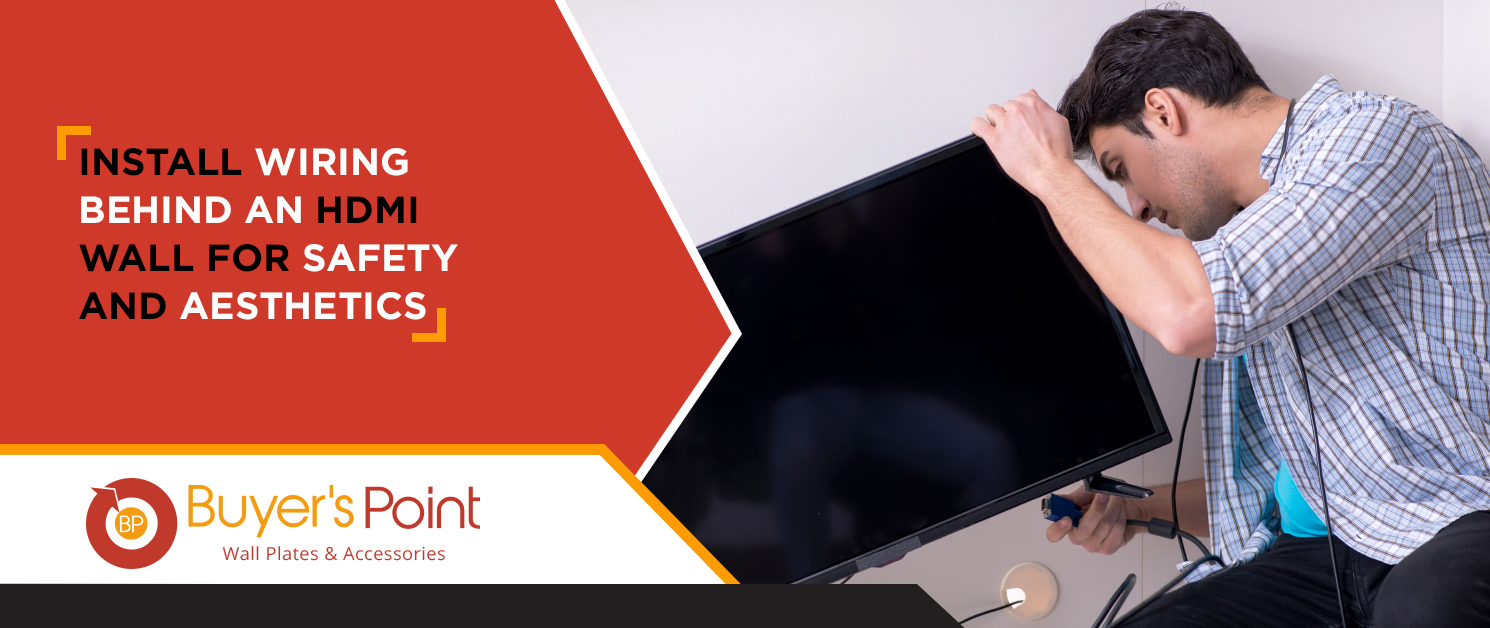
Install Wiring Behind An HDMI Wall For Safety And Aesthetics
What Is HDMI?
HDMI stands for high-definition multimedia interface, a connection that allows electronic devices to communicate. Ports and cables connect electrical components to each other in order to meet audio visual needs.
At the moment, high definition standards top out at 1920×1080, or 1080 pixels, but HDMI 1.4 is capable of accommodating high definition pixel resolutions of 3840×2160, even 4096×2160 (at a frame rate of 30 hz). Now, at the time of writing, HDMI 2.1 is the latest update of HDMI specification, and it is able to support even higher resolutions, refresh rates, and bandwidth capability.
HDMI may support connections between various electronic and computer accessories – ie. between a computer and a projector, between a DVD or Blu-ray player and a TV screen. Connections not limited only to visual capabilities, but they may also encompass audio equipment, such as speakers and recording systems.
Setting Up An HDMI Wall
An HDMI plate is essentially an in-wall installation of HDMI cables. Rather than leaving the cable in the open or running behind furniture, along the wall, or across the floor, the cable is placed within the wall. Mainly, an HDMI cable wall plate may be installed for the sake of safety, as well as for aesthetic reasons.
HDMI plates for walls are no different from other outlet plates in the house.
A low voltage mounting bracket may be easily placed onto any area of plaster or drywall. Then over that low voltage bracket, a plate may screwed on top. Low voltage mounting brackets may be used not only for HDMI cables but also for any other low voltage systems – such as any A/V (audio/video) wiring or for cable, satellite, or internet, etc.
The Purpose Of An HDMI Wall
As previously mentioned, an HDMI wall may be set up for reasons related to safety, performance, and aesthetics.
Keeping physical components of any electrical connections set aside – within the walls of a home – ensures lesser interference or damage to the cables. No tripping over cables laid across the floor. No possible exposure to damaged cables and wiring and less access to the cables by pets or children.
When it comes to aesthetics, it simply looks better, cleaner and more organized, when keeping wires and cables contained behind plates. There is less mess lying around on the floor, and connections for electronic devices are neatly put away behind walls.


[…] post Install Wiring Behind An HDMI Wall For Safety And Aesthetics appeared first on Buyers […]